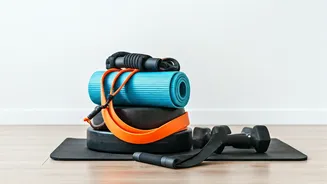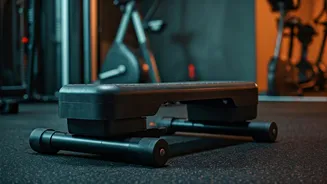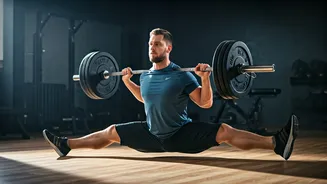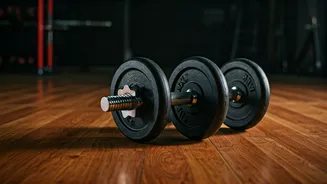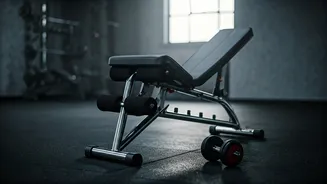Breathe and Brace
Before even attempting to lift the bar, it's vital to focus on your breath and core stability. Begin by taking a deep breath into your belly, not just
your chest. This deep breath inflates your abdomen, creating intra-abdominal pressure. Simultaneously, brace your core muscles as if you're preparing to be punched. This combination acts like a natural weightlifting belt, supporting your spine and enhancing stability. This process is crucial to safeguard your lower back and to transmit force from your legs to the bar effectively. Without proper bracing, your spine will be more vulnerable, and you'll be unable to lift the maximum weight possible.
Rushing the Setup
One of the most frequent errors encountered during a deadlift setup involves rushing the process. Many lifters, eager to get the lift underway, may skip key steps. This haste can lead to improper positioning, making you more prone to injury and reducing your lifting capacity. It's imperative to allocate sufficient time for each stage of the setup. This includes positioning your feet, gripping the bar, bracing your core, and ensuring your back is set. Taking your time here guarantees that you've optimized your body mechanics. Each moment spent on setup is an investment in both your safety and performance. Don't let impatience sabotage your lift.
Foot Position/Spacing
Proper foot placement forms the foundation of a successful deadlift. Your stance should be about shoulder-width apart, perhaps slightly narrower or wider depending on your body's specific proportions and comfort level. Your feet should generally be pointing slightly outwards, this allows for the optimal position of the hips and knees during the lift. The bar should be positioned over the mid-foot, roughly covering your shoelaces, this promotes a balanced distribution of weight. Experiment with foot positions until you discover the stance that feels most balanced and facilitates efficient force production. Achieving the correct foot spacing ensures a balanced base, which is crucial for efficient power generation and reduces the risk of imbalances that could lead to injury.
Hip Hinge/Position
The hip hinge is a key component of the deadlift. Initiate the lift by pushing your hips back while maintaining a neutral spine. The barbell should move in a straight line, as close to your body as possible. This action keeps the weight centered over your base of support, maximizing mechanical advantage. At the starting position, your hips should be slightly higher than your knees, allowing you to establish a strong base to lift. Your shoulder blades should be directly above the bar, and your back should maintain a neutral position. Finding the right hip position involves experimentation. It varies depending on your body and limb lengths. The correct positioning of the hips ensures that your hamstrings, glutes, and back muscles work together effectively.
Grip and Placement
The grip you use significantly impacts your ability to hold the bar securely and control its path. There are a few different grip options, but the most common is the overhand grip. The overhand grip involves gripping the bar with both palms facing down. For heavier weights, many lifters use a mixed grip, in which one hand faces down and the other faces up. The mixed grip can provide a stronger grip, but it might lead to imbalances in your muscles. The bar should be positioned right above your shins, about an inch or two from the body. Your hands should be placed just outside your legs, your arms hanging straight down. Avoid gripping too tightly to prevent unnecessary tension and maintain proper form.
Set Your Back
Setting your back is critical for a safe and effective deadlift. Your back should be rigid and straight, not rounded. Before you initiate the lift, focus on activating your latissimus dorsi muscles (lats). Engage your lats by imagining you're trying to bend the bar. This action creates tension in your upper back and helps maintain a straight spine. Keep your chest up and your shoulders back, avoiding any rounding of the upper back. Think of creating a shelf with your upper back to keep the bar close to your body during the lift. Setting your back correctly ensures that your spine stays in a neutral position, minimizing the risk of injury. The back should stay engaged throughout the entire movement, from the setup to the lockout.



